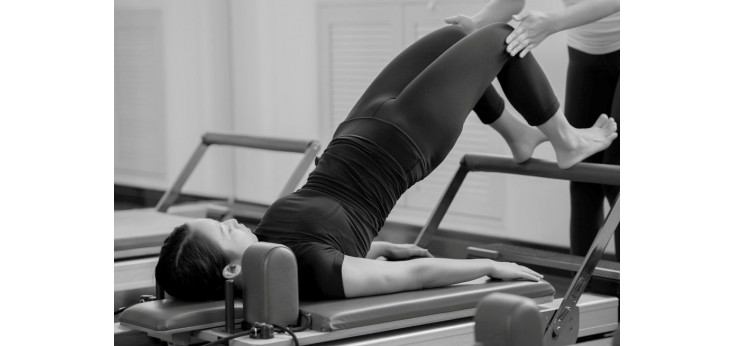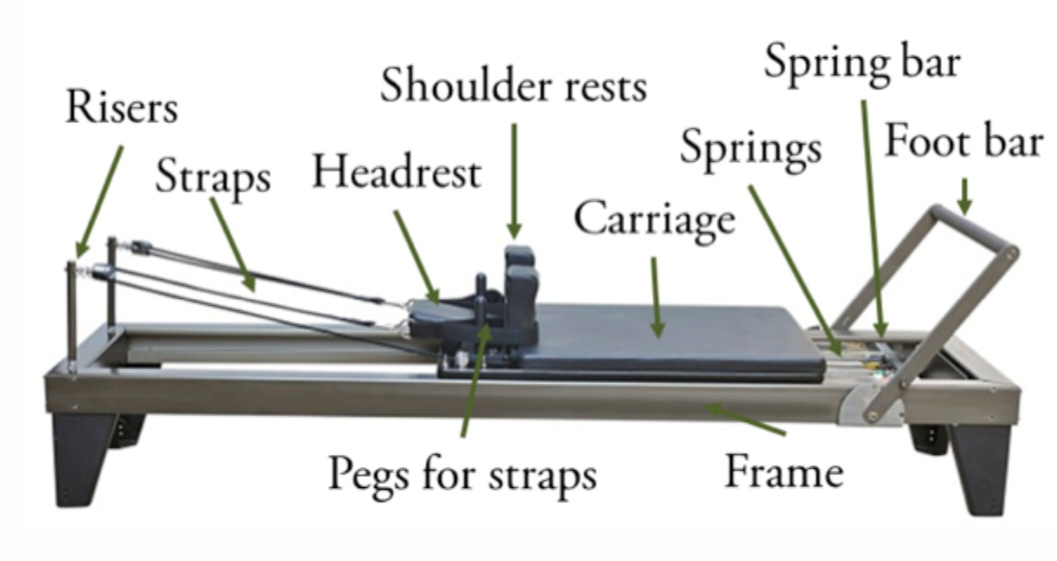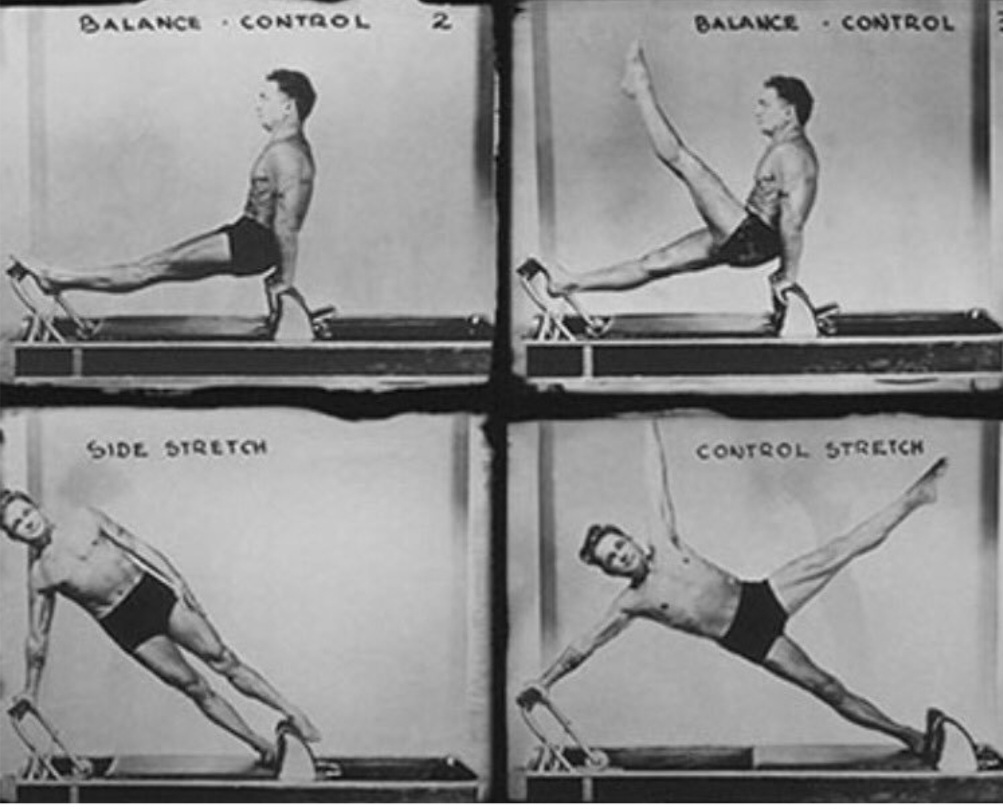Reformer Pilates

Reformer Pilates – Who created it and why?
Reformer Pilates has seen exponential growth globally over the last 5 years and a recent article in Womens Health reported that 70% of people surveyed in the UK would now choose Pilates over Yoga practice.
The Reformer machine was one of the first pieces of equipment created by Joseph Pilates whilst incarcerated on the Isle Of Man in 1915, during the First World war.
Whilst working in a hospital with wounded soldiers, Joseph started to experiment with springs and straps and realised that with minor adjustments, rehabilitation exercises could be performed even when patients were bed bound.
Throughout his life he created over 20 pieces of apparatus but the reformer is by far the most popular and well known.
What is the reformer?
The reformer is the name given to the entire platform and frame used in reformer Pilates and whilst each brand created today differs slightly in design, a diagram of a typical reformer can be seen below.

How does it work?
The reformer frame contains a carriage (similar to a bed) that moves back and forth with tension managed and adjusted via springs at one end.
Most modern reformers have between 3-5 springs with the different colours reflecting different resistance levels; allowing for the creation of bespoke exercise levels per user even when completing the same exercise.
The footbar is located at what is typically referred to as the front or head of the reformer and long adjustable straps are provided that can be used by either hands or feet.
The reformer can be used by facing the front or back and additional equipment such as boxes (referred to as short box when placed horizontally across the carriage or long box when placed vertically), poles, resistance bands, weights, balls and magic circles can be incorporated to compliment and enhance the effectiveness of reformer exercises.
Additional equipment can also be augmented onto a reformer frame including jump boards, racks and frames that transform the standard reformer into a Cadillac, facilitating even more elaborate and challenging exercises.
Why use a reformer vs other gym equipment?
The reformer differs from other gym equipment in that its' purpose is not focused on one particular muscle group; it is part of an integrated system which Joseph Pilates termed "Contrology".
This aimed to develop the complete co-ordination of mind, body and spirit to promote suppleness, muscular power, endurance, and good posture - ultimately alleviating symptoms of pain. You can see an image of Joseph Pilates on one of the first reformers he created, below.
“ I invented all these machines. I thought why use my strength? So I made a machine to do it for me. Look, you see it resists your movement in just the right way so those long inner muscles really have to work against it. That is why you can concentrate on the movement”
Joseph Pilates, Return To Life Through Contrology, 1945.

How will I benefit from using a reformer?
There are innumerable ways in which the reformer can be used and this in itself is a unique attribute as exercises can be performed seated, lying, standing and even upside down.
It can be used to develop muscular strength and endurance, enhance flexibility, alignment and posture and improve cardio respiratory function especially when mixing and adjusting the range of spring options specific to your needs– even the most experienced athletes and practitioners can be challenged by selecting lighter springs when body weight will need to be fully supported and correct muscles recruited.
For those with limited mobility the reformer is an ideal choice as studio reformers tend to be 46-48cm high (similar to typical bed heights) making it easy to perform exercises without getting up and down.
Is Reformer Pilates better than Mat Pilates?
A question that I am often asked, however in my opinion they are different sides of the same coin as the underlying Contrology principles of control, concentration, centering, flow, precision and breathing apply to both formats - only the execution and intensity differs.
As a mat and reformer teacher, I appreciate the benefits that each provides and see them as complimentary not competing when recommending the right approach for clients.
In my practice I try to ensure that the reformer is used to really concentrate on recruiting the right muscle groups to achieve the clients' goals (as opposed to being used like a piece of regular gym equipment) and that over time, clients see steady and quantifiable progress in their strength, flexibility and endurance performance.
I have experience of working with Basi, Align, Merrithew and Balanced Body reformer machines and apply creativity to each session to really target the areas and issues identified in your goals.






